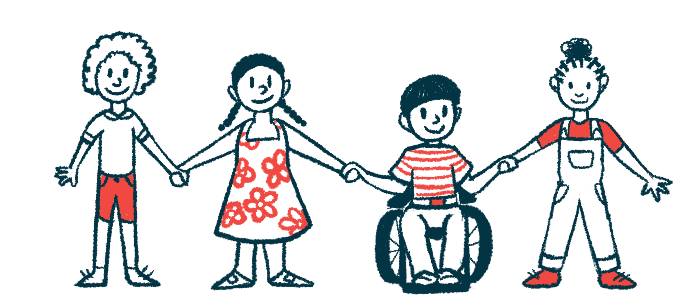Motor benefits of Zolgensma greater when given early: Study
Study focused on outcomes of 67 children with type 1 SMA
Written by |

Children with spinal muscular atrophy (SMA) who are treated with Zolgensma (onasemnogene abeparvovec-xioi) tend to have more dramatic gains in motor function when it’s given earlier in the course of disease, a new study reports.
The findings suggest the best improvements are seen among babies treated in the first months of life and that the risk of liver damage, a potentially serious side effect of the gene therpay, is higher in older patients.
The study, “Onasemnogene abeparvovec in spinal muscular atrophy: predictors of efficacy and safety in naïve patients with spinal muscular atrophy and following switch from other therapies,” was published in eClinicalMedicine.
Zolgensma is administered via infusion into the bloodstream and delivers a healthy copy of the SMN1 gene (whose mutations cause SMA) to cells. Clinical trials showed it can slow disease progression and improve motor function outcomes.
Such trials involved infants with severe types of SMA, all of whom were younger than seven months and weighed up to 8.5 kg (about 18.7 pounds).
In the U.S., Zolgensma is approved for SMA in patients ages 2 or younger. In Europe, Zolgensma canbe used for some SMA patients weighing up to 21 kg (about 46 pounds). Zolgensma is sold by Novartis, which was not involved in this study.
Researchers in Italy reported on outcomes for 67 children with type 1 SMA who were treated with Zolgensma in the country. Most of the children (69%) had been on Spinraza (nusinersen) beofre getting Zolgensma and 3% had been given Evrysdi (ridisplam). Four were identified via newborn screening and treated with Zolgensma before developing any symptoms.
Outcomes of Zolgensma on children with type 1 SMA
At the time they were treated with Zolgensma, almost all the children weighed between 3.5 and 13.5 kg (about 7- 30 pounds) and ranged in age from 22 days to just under 5 years. One child weighed 17 kg (35 pounds) and was 6 years old when Zolgensma was begun.
Motor function data, as measured with a standardized score called the Children’s Hospital of Philadelphia Infant Test of Neuromuscular Disorders (CHOP-INTEND), was available for 46 patients. Results showed that, at a year after Zolgensma treatment, the average CHOP-INTEND scores improved significantly, reflecting better motor function.
The largest score improvements were seen among the four babies who received treatment before any disease symptoms developed. This was expected since, like other SMA treatments, Zolgensma can stop the disease from worsening, but can’t reverse damage that’s already accrued, the researchers said.
As of the most recent follow-up, all four infants were able to sit independently, one could stand, and two could walk — all milestones that aren’t attained in untreated children with type 1 SMA.
Among the 46 patients who’d been on other treatments before Zolgensma, 14 were able to sit independently before receiving gene therapy and another 28 gained the ability to sit independently after treatment. Among 16 evaluable patients who hadn’t been on treatment before getting Zolgensma, six can sit and one can stand as of the latest follow-up.
Patients who were younger than 6 months when they received Zolgensma tended to have better motor function improvements, as assessed by CHOP-INTEND, statistical analyses showed.
These findings will be of help when counseling families who may opt to switch therapy hoping to see the same magnitude of responses observed in infants treated at an earlier age.
Analyses also showed better improvements in patients who weighed less than 8.5 kg (19 pounds) or had better initial CHOP-INTEND scores at the time of treatment. Because babies who are younger also tend to weigh less and have less advanced progression, these findings “should be read as complementary,” the researchers said.
Patients who were younger than 2 years when they got gene therapy saw significant improvements in average CHOP-INTEND scores by three months after gene therapy, analyses also showed. Older patients didn’t see significant improvements until a year after treatment, on average.
The researchers said the results “confirm the efficacy of OA [Zolgensma] in children treated at different ages,” even though the data are hard to interpret with certainty because there’s so much variability among patients.
“Our data also provide additional evidence of the response to OA when administered in older infants who have already been treated with another treatment, indicating that the response obtained in older infants can be variable and can be partially predicted by age at OA treatment and baseline CHOP-INTEND scores,” they said. “These findings will be of help when counseling families who may opt to switch therapy hoping to see the same magnitude of responses observed in infants treated at an earlier age.”
Safety data reported in this trial were generally consistent with the known safety profile of Zolgensma. Many patients had fever, vomiting, or loss of appetite in the days immediately after treatment.
Increases in markers of liver damage were common, although no patient developed any clinical signs of liver problems. The risk of increased liver damage markers was higher in older patients, who tend to require higher doses because they weigh more.




